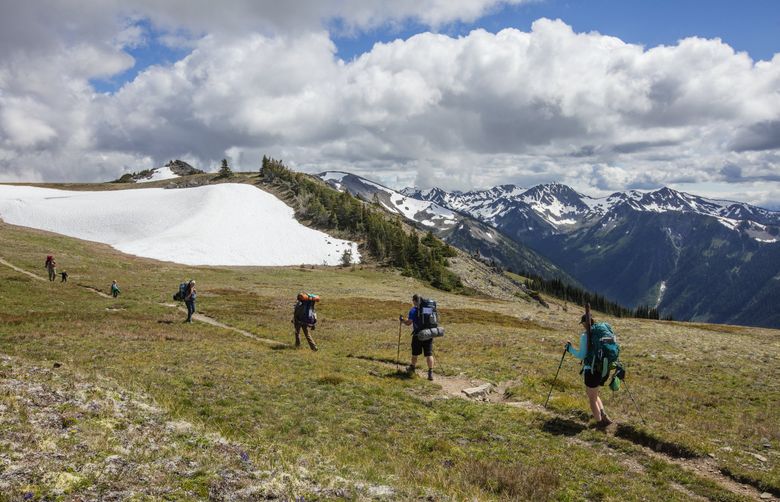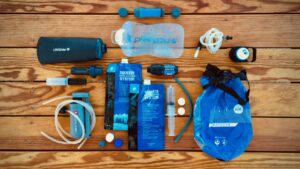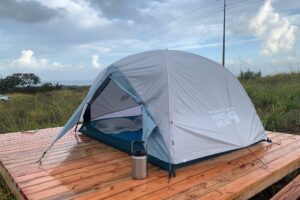Wilderness safety tips for backpackers include informing someone about your trip, packing appropriate gear, staying on marked trails, and being cautious of wildlife. Backpacking is a thrilling way to explore the natural world, but it comes with its share of risks.
It is crucial to prioritize safety to ensure an enjoyable and secure experience. This article provides valuable information and tips to help you stay safe in the wilderness as a backpacker.

Credit: www.seattletimes.com
Understanding The Risks Associated With Backpacking
Identifying Common Dangers In The Wilderness
Backpacking is a thrilling experience, but it comes with a certain level of risk. Knowing the most common wilderness dangers can help you avoid them and stay safe. Here are some of the dangers you may encounter while backpacking:
- Wild animals: Bears, snakes, and mountain lions are some of the most dangerous animals that you might encounter in the wilderness.
- Dangerous terrain: Rocky or uneven terrain, steep slopes, and unstable rocks can all lead to falls and other hiking accidents.
- Hypothermia and heat exhaustion: Extreme weather conditions can cause hypothermia (when your body loses heat faster than it can produce it) or heat exhaustion (when your body overheats and can’t cool down), either of which can be fatal if left untreated.
- Getting lost: The wilderness can be unpredictable, and if you aren’t prepared, it’s easy to get lost.
Researching Weather And Environmental Conditions
Before embarking on a backpacking trip, it’s essential to research the weather and environmental conditions of the area you’re planning to visit. Here are some factors to consider:
- Weather: Check the forecast for the area you’ll be hiking in to see if there are any storms or other severe weather conditions predicted.
- Terrain: Knowing the type of terrain you’ll be hiking on can help you prepare physically and mentally for the trip.
- Water sources: Finding safe, reliable water sources is essential for any backpacking trip. Research streams, rivers, and other sources of water in your area.
- Wildlife: Research the animals in the area and learn how to stay safe around them.
Planning For Emergencies
Even the most experienced backpackers can run into trouble while out in the wilderness. By planning for emergencies before you set out, you can help ensure that you’re prepared for whatever may come your way. Here are some key considerations:
- First aid kit: Make sure your first aid kit is well-stocked, up-to-date, and includes any necessary medication you may need.
- Emergency shelter: Pack enough equipment to set up an emergency shelter, like a tarp or emergency blanket.
- Navigation tools: Bring a map, compass, and gps to avoid getting lost.
- Fire starter: In case of an emergency, it’s important to have a way to start a fire to keep warm and signal for help.
Importance Of Communication Devices
Finally, it’s crucial to bring communication devices on any backpacking trip, allowing you to contact help if you need it. Consider some of these options:
- Satellite phone: Ideal for remote areas without cell phone coverage.
- Personal locator beacon: A device that sends a distress signal to search and rescue services via satellite.
- Two-way radios: A reliable way to communicate with others in your group if you get separated or need to call for help.
By adhering to these wilderness safety tips, you can ensure your backpacking trip is a safe and enjoyable experience.
Packing Tips For A Safe Backpacking Trip
Essential Gear For A Safe Backpacking Trip
When heading out on a backpacking trip, it’s important to carry essential gear to ensure your safety. Here are some vital items you should pack:
- A high-quality, multi-purpose backpack
- Navigation tools like a map, compass, and gps
- First aid kit with necessary medications, bandages, and antiseptic
- Extra clothing layers to protect against weather changes
- A headlamp with extra batteries to enable visibility in the dark
- A multi-tool or knife
- Emergency shelter like a tent or bivy sack
- Insect repellent to avoid mosquito bites
Appropriate Clothing And Footwear
Appropriate clothing and footwear can make or break a backpacking trip. Here are some tips to make sure you’re packing suitable outdoor wear:
- Wear moisture-wicking fabrics, such as synthetic or wool, to keep you dry
- Dress in layers to adjust to the weather changes
- Carry rain gear to stay dry in rainy weather
- Wear sturdy and comfortable hiking boots with good ankle support and good grip to prevent slipping
Safe Food Practices
Food safety is essential to prevent illnesses while you’re out in the wilderness. Here are some safety tips to practice when packing your food:
- Pack dry and non-perishable foods such as nuts, seeds, and dehydrated meals
- Store food away from wildlife by hanging it at least 200 feet from your sleeping area, using bear-resistant canisters or odor-proof bags
- Follow food safe hygiene practices by washing your hands before handling food
- Store your trash in airtight containers and dispose of it properly.
Fire Safety
Building a fire while backpacking is an essential part of keeping warm but can pose danger. Here are some fire safety tips:
- Always check the local regulations; open fires may be prohibited in certain areas
- Only build a fire in established fire rings or at previously used sites
- Ensure to clear the area of dry natural matter and make a fire pit to prevent the spread of fire
- Always attend the fire and never leave it unattended
- Use water to put out the fire completely after use.
Hydration And Water Treatment
Clean, safe water is necessary during backpacking. Here are some essential tips to consider when planning on staying hydrated:
- Carry a water bottle, hydration packs or a water filter/purifier device
- Treat water from natural sources such as rivers, ponds, and streams before drinking or cooking
- Be cautious of stagnant water which may contain harmful bacteria, protozoa, or viruses
- Drink water frequently and stay hydrated to avoid heat stroke, exhaustion and altitude sickness.
By following these packing tips, you’re taking a vital step towards ensuring your safety and having an enjoyable trip while backpacking. Happy trails!
Conclusion
As a backpacker, it’s important to prioritize safety when exploring the wilderness. By following these tips, you can ensure a safe and enjoyable journey – always prepare for the unexpected, watch out for wildlife, stay hydrated, stay aware of your surroundings, and make smart decisions.
Remember to bring along necessary tools, like a first aid kit and map, and share your itinerary with someone who’s not on the trip. While the wilderness can be beautiful, it’s important to respect the environment and prioritize your safety above all else.
Remember, preparation is key. By following these simple guidelines, you can enjoy your backpacking adventure with a peace of mind knowing that you are taking steps to prioritize your safety in the wilderness. Stay safe and happy exploring!




